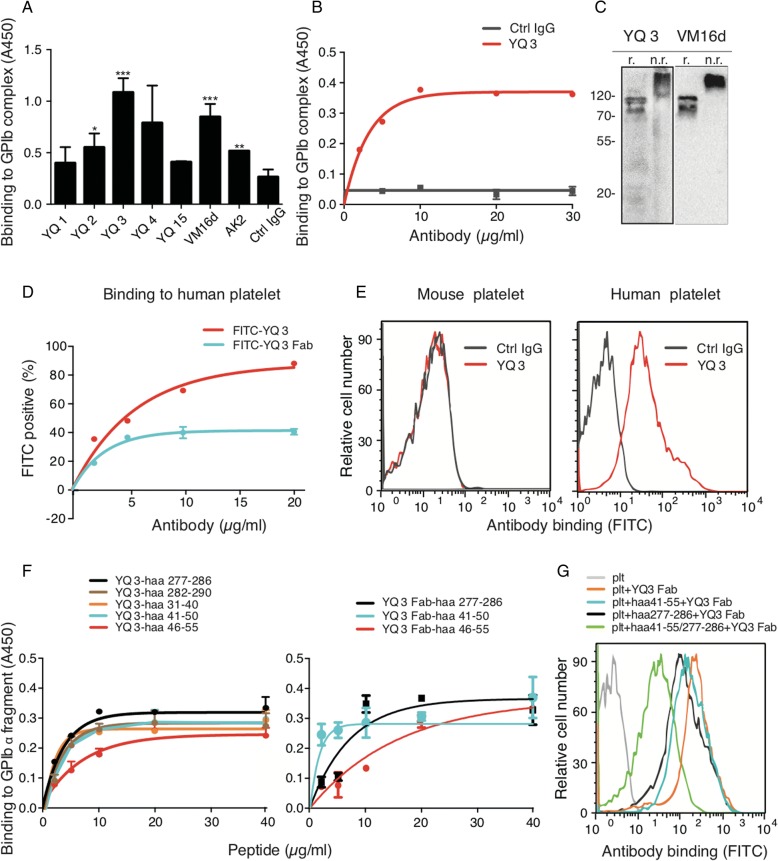Fig. 5.
YQ3 binds specifically to human glycoprotein (GP)Ibα. a Binding of mouse anti-human antibodies to GPIb-IX complex was detected in ELISA. GPIb-IX was captured by anti-GPIX antibody which complex was immobilized in microtiter plates. Supernatant of hybridoma cells, each identified by the clone name, and the negative control, in the form of RPMI-1640 fetal bovine culture medium with 5 μg/ml mouse IgG, were added to the coated wells. The bound Ab was detected with HRP-conjugated rabbit anti-mouse IgG. b Binding of YQ3 to GPIb-IX complex was detected in ELISA. Negative control was in the form of normal mouse IgG. The bound Ab was detected with HRP-conjugated rabbit anti-mouse IgG. c YQ3 recognized specifically GPIbα in Western blot. d Binding of FITC-conjugated YQ3 or YQ3 Fab to washed human platelets was detected by flow cytometry. Washed human platelets were incubated with YQ3 and YQ3 Fab at indicated concentration. e YQ3 specifically bound to human platelet. Washed human and mouse platelets were incubated with 10 μg/ml FITC-conjugated YQ3. Binding of Ab was detected by flow cytometry and quantitated by mean fluorescence intensity. f Binding of YQ3 and its Fab to GPIbα peptide fragment was detected in ELISA. Indicated concentration of GPIbα peptide fragment was immobilized in microtiter plates. Ten micrograms per milliliter of YQ3 or YQ3 Fab was added to the coated wells. The bound Ab or Fab was detected with HRP-conjugated rabbit anti-mouse IgG. g The competitive binding of peptides and platelet to antibodies was detected by flow cytometry. Washed human platelets were pretreated with aa 41-55, aa 277-286, or both aa41-55 and aa277-286 before adding FITC-conjugated YQ3 Fab. The fluorescence intensity was detected in flow cytometry. Each figure or histogram is a representative of three independent experiments

